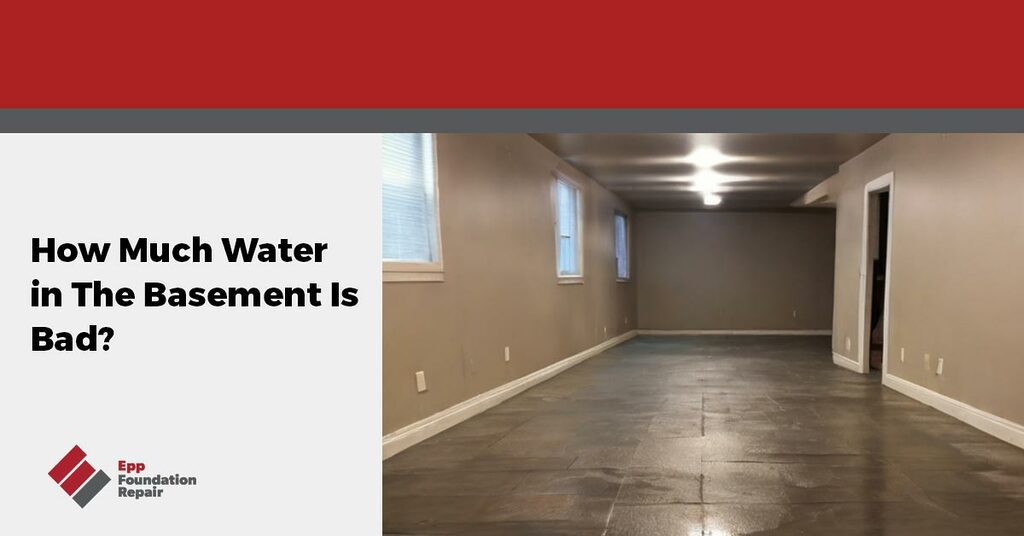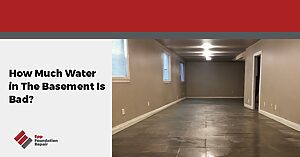If you have water in the basement, you may be concerned about where it came from and what it could do. Then again, many homeowners experience this problem so frequently that they consider it a normal part of home ownership.
How Much Water in The Basement Is Bad?
Even though it may be normal to have water in your basement, it is never an issue that should be ignored. We have seen many homes that have been negatively impacted by water intrusion, and it can happen quickly and only worsen over time.
As a homeowner with water in the basement, you may ask yourself questions such as where the water is coming from, how you can get rid of it, and what damage it is causing. This article will address those issues and more.
What Can Water in The Basement Do To A Home?
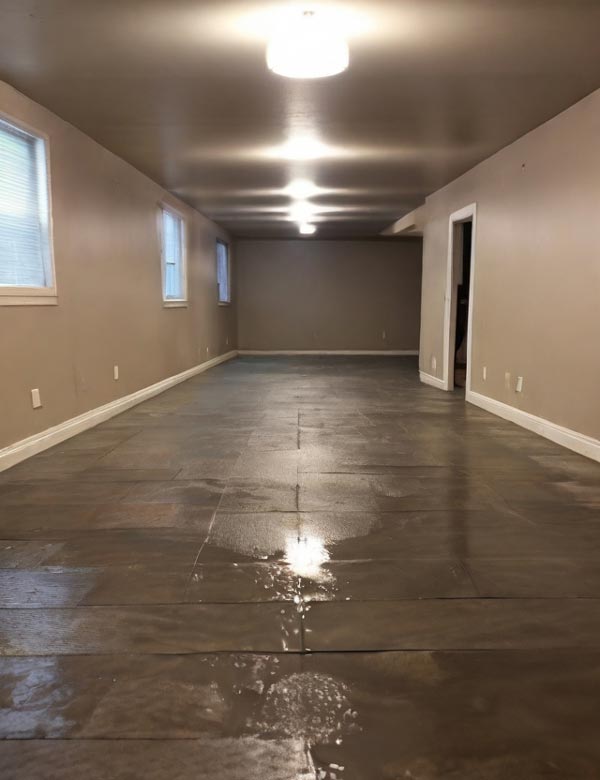
First, it’s essential to understand that it doesn’t matter if you have a lot of water in the basement or only a little water. It is a problem that needs to be addressed. In either case, it is an issue that can lead to significant problems, and it may also be a sign of bigger problems with the foundation.
Here are just a few things water could do to your home when it is a problem in your basement.
Mold and Mildew: The last thing any homeowner wants to deal with is mold. Mold needs moisture, air, and a food source to grow and thrive. When you have water in the basement, you provide mold with everything it needs to grow.
The problem is the mold won’t stay in the basement, as it will also be a problem for the rest of the home due to the stack effect. The stack effect occurs when warm air rises and exits through the roof, leaving behind a vacuum that pulls air out of the basement.
Some experts have estimated that 50% or more of the air in your home originates in the basement. Consider that the next time water is an issue.
Ruined Belongings: If you use the basement for storage or as an extra living space, water will destroy what is there. It doesn’t matter if it is boxes of stored items, a sofa, or a deep freezer; water will cost you money in this way.
Higher Energy Bills: Since you have higher moisture levels in the basement, you will have higher humidity throughout the home due to the stack effect.
Moist air is more challenging to heat in the wintertime or cool in the summertime. You likely have noticed an increase in your energy bills due to the excessive moisture levels.
These are just a few of the many problems that can occur due to water in the basement. The next step is to figure out how water is getting in.
How Does Water Get Into the Basement?
Water can get into the basement through almost any small crack or opening. That is why it is crucial to investigate the matter and have it repaired as soon as possible. Here are a few possible ways water can get in.
Foundation Cracks: If you have cracks in the foundation, water could force its way through those small openings. These cracks often occur as a result of hydrostatic pressure.
A buildup of moisture in the soil surrounding the basement can put a significant amount of pressure on the basement walls. This hydrostatic pressure often results in cracked and bowed basement walls.
It doesn’t take much of a crack for water to get in. Once water gets in, it will likely continue coming in through the same cracks.
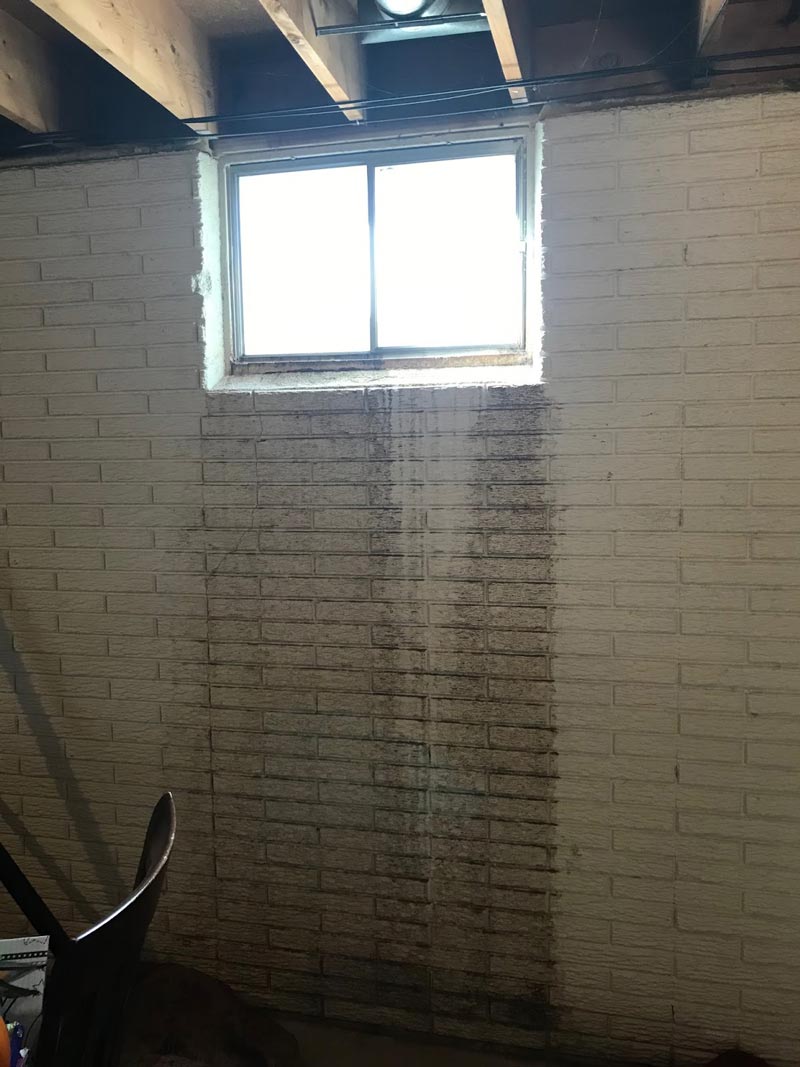
Windows: The windows in the basement are an essential part of the area. They provide light, ventilation, and a possible escape route if needed. Windows are also a common way that water enters the basement.
Any weakened areas around the windows can allow water to come in. Windows that are not installed properly or cracked windows are also problematic.
Short Downspouts: One of the ways that moisture becomes a problem in the soil around the foundation is because of roof runoff. If water from the roof flows through downspouts that are too short, it may be deposited directly at the foundation wall, leading to hydrostatic pressure. Downspout extensions can fix this problem by taking the water an acceptable distance from the foundation so it can drain naturally.
Sill Plate: Is the ground outside above the level of the sill plate? If it is, water that collects in the soil could seep in through the sill plate and into the basement.
How to Know if Your Foundation Is Compromised
If water is accumulating in the basement, it is sometimes a sign of a bigger problem. The foundation itself may already be compromised, and even if it isn’t, water in the basement can undermine the foundation and lead to issues.
Most homeowners will recognize specific issues that can signal a problem with foundation damage. If you spot any of these problems, keep your eye on them, and if they get worse or if you see multiple problems, contact Epp Foundation Repair for a foundation inspection.
Gaps Between the Wall and Floor: As the foundation settles, it doesn’t always do so at the same rate. You may experience a problem known as differential settlement when part of the home’s foundation sinks quickly. This can lead to a lot of pressure on the home’s frame.
As the pressure continues to get worse, gaps may begin to appear between the wall and the floor. These gaps are the outward symptoms that something else is wrong.
Leaning Chimney: A chimney is often situated on a part of the foundation that is not as well supported as the rest of the structure. A leaning chimney is often one of the first signs that you have foundation problems.
If the chimney is tilting or separating from the home, it’s time to contact the professionals at Epp Foundation Repair for further inspections.
Wall and Ceiling Cracks: If you notice any cracks appearing on the interior walls, it may be due to foundation movement. Drywall is not a strong building material, so cracks can occur in some more vulnerable areas, such as near windows or doors. Some cracks may also extend from the wall to the ceiling and across the ceiling.
Sticking Doors and Windows: You may notice the windows sticking when you open and close them. A similar problem can happen to the doors. This issue often occurs because the window and door frames are out of square due to the torque put on them by the sinking foundation.
Uneven Floors: The floors may get uneven as the foundation experiences differential settlement. This isn’t always easy to see, but you may feel that as you walk across the room, as you could get dizzy or feel like you are falling. You can check the floor level if problems are occurring.
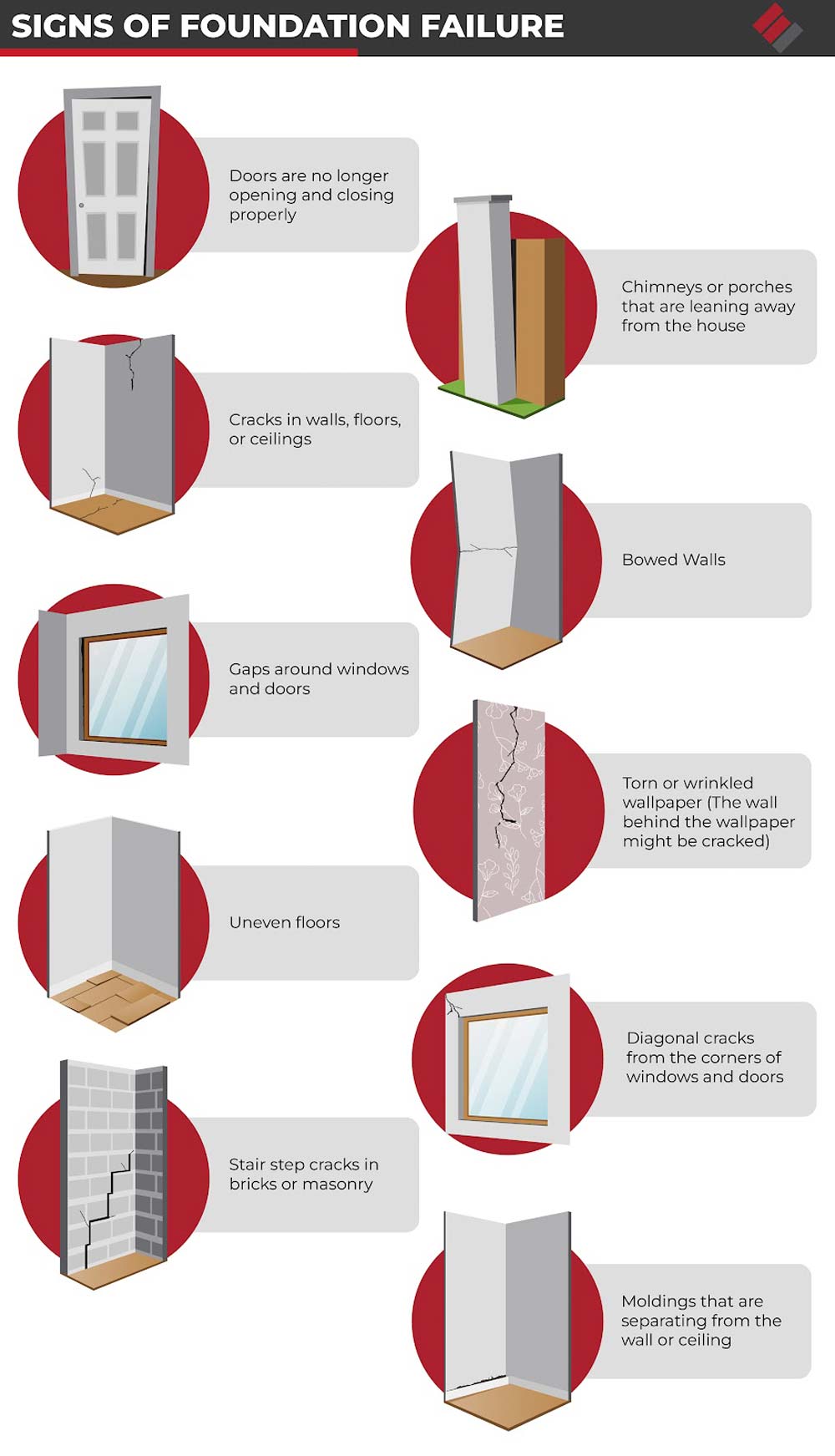
What Can Be Done to Fix a Problem with Water in The Basement?
If you already have a problem with water in the basement, you are likely wondering how to fix it. There are repair methods that can remove this issue permanently, but it depends upon the extent of the damage that has occurred.
Underpinning: For those who have a problem with their foundation settling, underpinning may be necessary. Underpinning uses push or helical piers that are pushed into the ground until they reach stable soil. They can then be attached to the foundation to stabilize it and even raise it if necessary.
Exterior Basement Waterproofing: This process is often considered when the home is still under construction. If the construction is complete, excavation next to the foundation wall will be necessary until the footer is reached.
Exterior basement waterproofing can improve the drainage of the soil outside of the home. This is done by installing a drain system at the footing level. Downspout extensions can also keep water from being a problem near the home. One other part of exterior basement waterproofing is applying a membrane on the foundation wall to keep water from entering.
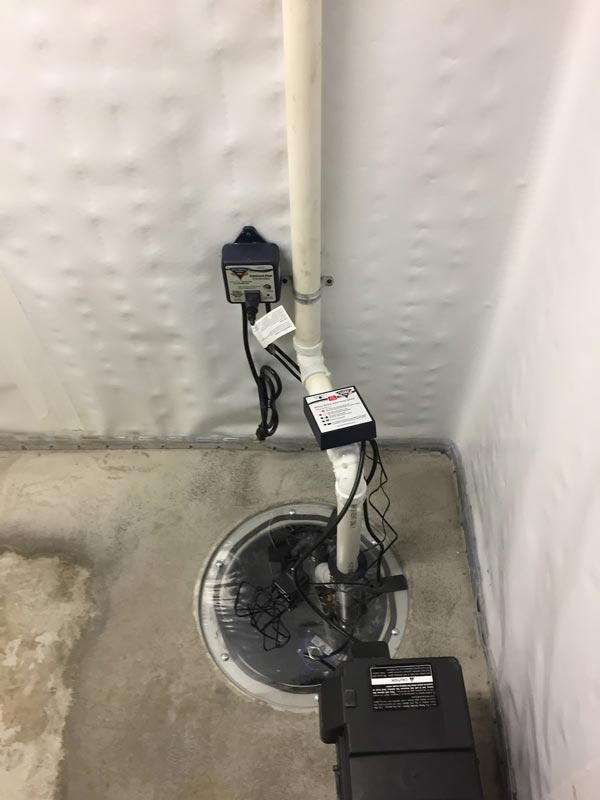
Interior Basement Waterproofing: There are methods used for interior basement waterproofing that also help to keep the basement dry. This could include using a drain tile system around the perimeter of the foundation and under the slab. It would drain into a sump pit.
A sump pump can be installed with a backup battery to pump the water out of the sump pit when it reaches a certain level. The water is pumped away from the home, so it drains away naturally.
An interior vapor barrier can also be installed during the interior basement waterproofing job. The vapor barrier keeps water from entering the basement as well.
Can a Flooding Basement Ever Be a Useful Part of The Home?
Many homeowners with a flooding basement have become accustomed to the thought that the basement will never be a useful part of the home. With the proper repairs, however, you would be surprised with what you can do with the basement area.
After the foundation is fixed, you can use basement waterproofing to keep the basement dry. As a result, the humidity will be lower, and the basement will be healthier.
You can use a dry basement to store your personal items or as extra living space. Just because the basement is flooding now doesn’t mean it will flood in the future, and you can use basement waterproofing to ensure that it doesn’t.
Contact Epp Foundation Repair for more information about our foundation inspection, repair, and basement waterproofing services. One of our friendly foundation professionals will get back to you as soon as possible to discuss the next steps.

